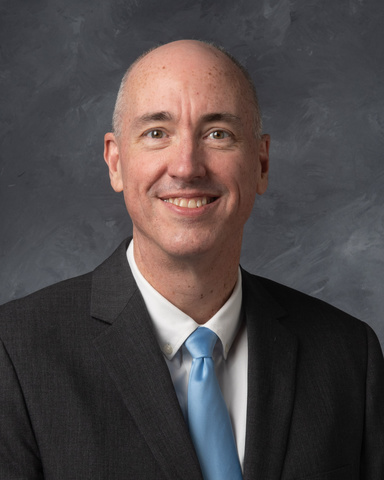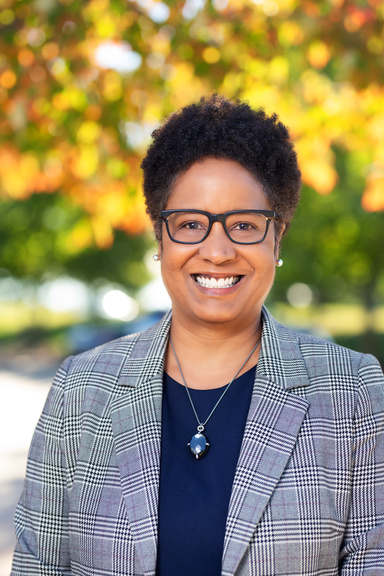Donald Anderson, professor of orthopedics and rehabilitation in the University of Iowa Carver College of Medicine; Gary Christensen, professor of electrical and computer engineering; and Harriet Nembhard, dean of the College of Engineering and University of Iowa and Roy J. Carver Professor, have been named members of the American Institute for Medical and Biological Engineering (AIMBE) College of Fellows.

Anderson was recognized for “computational analysis and modeling of how mechanical factors in the musculoskeletal system influence clinical outcomes.” Christensen was recognized for his “contributions to medical image registration and analysis.” Nembhard was recognized “for outstanding practice and care quality for patients, healthcare systems engineering education, and a healthier academic community of inclusive excellence.”
According to AIMBE, the College of Fellows is comprised of the top 2% of medical and biological engineers in the country.
Anderson, who is the Richard and Jan Johnston Chair of Orthopedic Biomechanics and Vice Chair of Research in the Department of Orthopedics and Rehabilitation, performed fundamental research to provide a better understanding of how abnormal joint mechanics contribute to the development of osteoarthritis, one of the most common causes of disability in adults. His work has provided new ways to quantify the severity of articular joint trauma by objectively measuring the energy released during the fracture. Additionally, he has described how chronic contact stress mechanically challenges fractured joint surfaces and quantified post-traumatic osteoarthritis risk. This research has garnered several top awards, including the American Society of Biomechanics MicroStrain Award and the Kathryn Cramer Outstanding Clinical Paper Award from the Ruth Jackson Orthopedic Society.
As an educator and mentor, Anderson has used his engineering expertise to advance surgical skills training using simulation technology. His collaboration with orthopedic surgeons has produced an education and research program to better and more safely train orthopedic resident physicians' surgical skills.

Christensen’s research interests include image processing, medical imaging, deformable shape models, 3D visualization, computer architecture, and parallel computing. He has developed methods and computer programs that create labeled 3D pictures of the brain and lung called electronic atlases that take a standard atlas and reshapes it to look like a specific person. These methods can be used to compute the shape of the average normal brain and then measure how different the shape of an individual's brain is to the average. This allows the computer to detect the location of abnormal or diseased regions of the brain and measure how much these regions differ from the average normal shape . These methods are also used to map brain function collected from many different individuals to a standard electronic atlas. This allows information collected from many individuals to appear as though they were all collected from a single individual. This is important because it is often impractical to run hundreds or thousands of experiments on the same individual due to radiation exposure time or because the brain function changes due to the individual learning or adapting to the experiment. He is a fellow of the Institute of Electrical and Electronic Engineers.
For the last 20 years, Christensen has been developing methods to modify or adapt radiation treatment to improve targeting of cancer tumors while minimizing radiation dose to surrounding healthy tissue. Currently, Christensen is participating in a clinical trial with John Bayouth, a UI adjunct associate professor of radiation oncology, and Joseph Reinhardt, the UI Roy J. Carver Chair in Biomedical Engineering, that improves lung cancer radiation treatment by minimizing radiation dose to high functioning lung regions. In this project, computer programs developed by Christensen are used to determine regions of high and low lung function. The radiation therapy plan is then designed to reduce radiation dose to the high functioning regions of the lung while delivering the prescribed radiation dose to the tumor. This project illustrates an application in which Christensen's research provides additional information about the lung that cannot be detected by looking at medical images such as MRI or CT. This is the first clinical trial of its kind and has great potential to improve lung cancer radiation therapy.

Nembhard has served as dean since 2020 and is an accomplished researcher in manufacturing and healthcare systems engineering. Her work has led to several advances including a patented manufacturing process for molding small-scale medical devices and a system that uses sensors to conduct early screening for Parkinson’s disease. She is a fellow of the Institute of Industrial and Systems Engineers and a fellow of the American Society for Quality.
Over the past five years, she has been engaged in research that focuses on addressing disparities at the intersection of health, wealth, and education for emerging adults—namely, college students of traditional age—with research that focuses on student well-being. She has led and participated in efforts in this regard across the academy and professional societies including National Science Foundation (NSF) ADVANCE, NSF Launching Academics on the Tenure Track, NSF Transforming Engineering Culture to Advance Inclusion and Diversity, the National Academy of Engineering, and the Society of Women Engineers.
Anderson, Christensen, and Nembhard will be inducted at the AIMBE Annual Event on March 25, which will take place virtually.